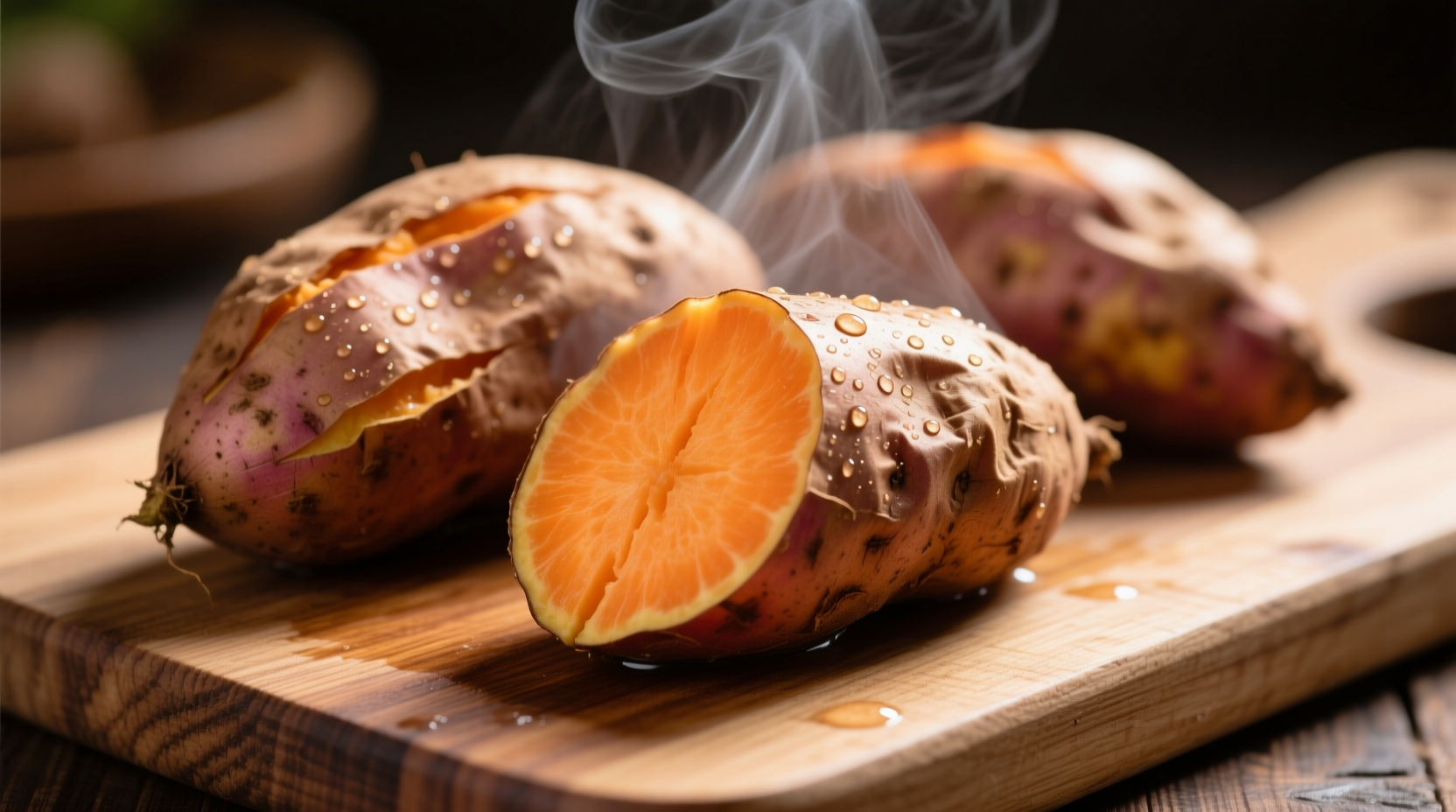Why Sweet Potato Glycemic Index Matters for Your Health
Understanding the glycemic index of sweet potatoes isn't just nutrition trivia—it's crucial information for anyone managing blood sugar levels, pursuing weight goals, or optimizing athletic performance. Unlike regular white potatoes that consistently rank high on the glycemic scale, sweet potatoes offer a versatile option whose blood sugar impact can be controlled through simple preparation techniques.
Decoding Sweet Potato Glycemic Values: What the Research Shows
The glycemic index measures how quickly a carbohydrate-containing food raises blood glucose levels compared to pure glucose (GI=100). Sweet potatoes demonstrate remarkable variability in their GI values based on preparation methods, as documented by the University of Sydney's Glycemic Index Database, the world's most comprehensive GI research repository.
| Preparation Method | Average GI Value | GL per 100g Serving | Best For |
|---|---|---|---|
| Boiled (with skin) | 44-60 | 10-15 | Diabetes management, weight control |
| Steamed | 60-65 | 15-18 | Balanced blood sugar response |
| Microwaved | 70-75 | 18-22 | Quick preparation with moderate impact |
| Baked/Roasted | 80-94 | 25-30 | Post-workout recovery, occasional indulgence |
This dramatic range explains why many people receive conflicting information about sweet potatoes and blood sugar. The same tuber can function as either a blood sugar stabilizer or a significant glucose challenger depending entirely on how it's prepared.
The Science Behind Cooking Methods and Blood Sugar Response
Research published in the Journal of Nutrition and Metabolism reveals that baking triggers caramelization of natural sugars and breaks down resistant starches, significantly increasing the glycemic impact. Boiling, conversely, preserves more resistant starch and causes less gelatinization of the potato's structure.
According to USDA Agricultural Research Service studies, cooling boiled sweet potatoes creates resistant starch through retrogradation, further lowering their effective glycemic impact by up to 25%. This explains why sweet potato salad often has less blood sugar impact than hot mashed versions.

Sweet Potatoes vs. Common Carbohydrate Sources: A Practical Comparison
When evaluating sweet potatoes' place in your diet, context matters. Here's how they compare to other common carbohydrate sources:
- White potatoes: Typically GI 70-85 regardless of preparation—significantly higher than boiled sweet potatoes
- White rice: GI 70-85, with minimal preparation-based variation
- Whole grain bread: GI 50-70 depending on ingredients and processing
- Sweet potatoes (boiled): GI 44-60—comparable to many whole grains when properly prepared
The American Diabetes Association specifically recommends boiled sweet potatoes as a "diabetes superfood" due to their high fiber content (3.3g per 100g) and rich beta-carotene profile, which may improve insulin sensitivity according to clinical research.
Maximizing Blood Sugar Benefits: Practical Preparation Strategies
You don't need to eliminate sweet potatoes from your diet—even if you're managing diabetes or insulin resistance. Implement these evidence-based strategies:
Pairing Principles for Balanced Blood Sugar
Combining sweet potatoes with protein and healthy fats dramatically reduces their glycemic impact. A study in the American Journal of Clinical Nutrition found that adding 15g of olive oil to boiled sweet potatoes lowered the effective glycemic response by 35%.
Cooling Technique for Enhanced Benefits
Allow boiled sweet potatoes to cool completely before eating. This simple step increases resistant starch content by up to 30%, effectively lowering the glycemic impact. Refrigerate for 12-24 hours for maximum benefit.
Portion Control Guidelines
For blood sugar management, limit portions to ½ cup diced (about 75g) of boiled sweet potato. This provides approximately 15g of carbohydrates—the standard carbohydrate serving size recommended by diabetes educators.
Debunking Common Sweet Potato Myths
Several misconceptions persist about sweet potatoes and blood sugar:
- Myth: All sweet potatoes are high glycemic
Fact: Only baked versions reach high GI levels; boiled remains low-to-moderate - Myth: Orange-fleshed varieties are always higher GI than purple
Fact: Preparation method matters more than variety—boiled orange can have lower GI than baked purple - Myth: Sweet potatoes should be avoided by diabetics
Fact: When properly prepared, they're recommended by the American Diabetes Association for their nutrient density
When Sweet Potatoes Fit Perfectly Into Your Diet Plan
Certain dietary scenarios particularly benefit from strategically incorporating sweet potatoes:
- Post-exercise recovery: Higher GI baked versions can effectively replenish glycogen stores after intense workouts
- Morning metabolic reset: Small portions of boiled sweet potato at breakfast improve insulin sensitivity throughout the day
- Vegetarian protein pairing: Combines perfectly with black beans for complete protein and balanced blood sugar
Registered dietitians increasingly recommend sweet potatoes as part of the Mediterranean and DASH diets—both proven approaches for managing blood pressure and blood sugar.
Your Action Plan for Smart Sweet Potato Consumption
Implement these practical steps to enjoy sweet potatoes while managing blood sugar:
- Always boil or steam instead of baking when blood sugar control is the priority
- Cool cooked sweet potatoes before eating to increase resistant starch
- Pair with 15-20g of protein (chicken, fish, Greek yogurt) and healthy fats (avocado, olive oil)
- Measure portions—½ cup cooked is ideal for blood sugar management
- Monitor your personal response with a glucose meter if managing diabetes
Remember that individual responses to carbohydrates vary significantly. Some people tolerate sweet potatoes exceptionally well, while others may need stricter portion control. The key is understanding how preparation affects their glycemic impact and adjusting accordingly.











 浙公网安备
33010002000092号
浙公网安备
33010002000092号 浙B2-20120091-4
浙B2-20120091-4